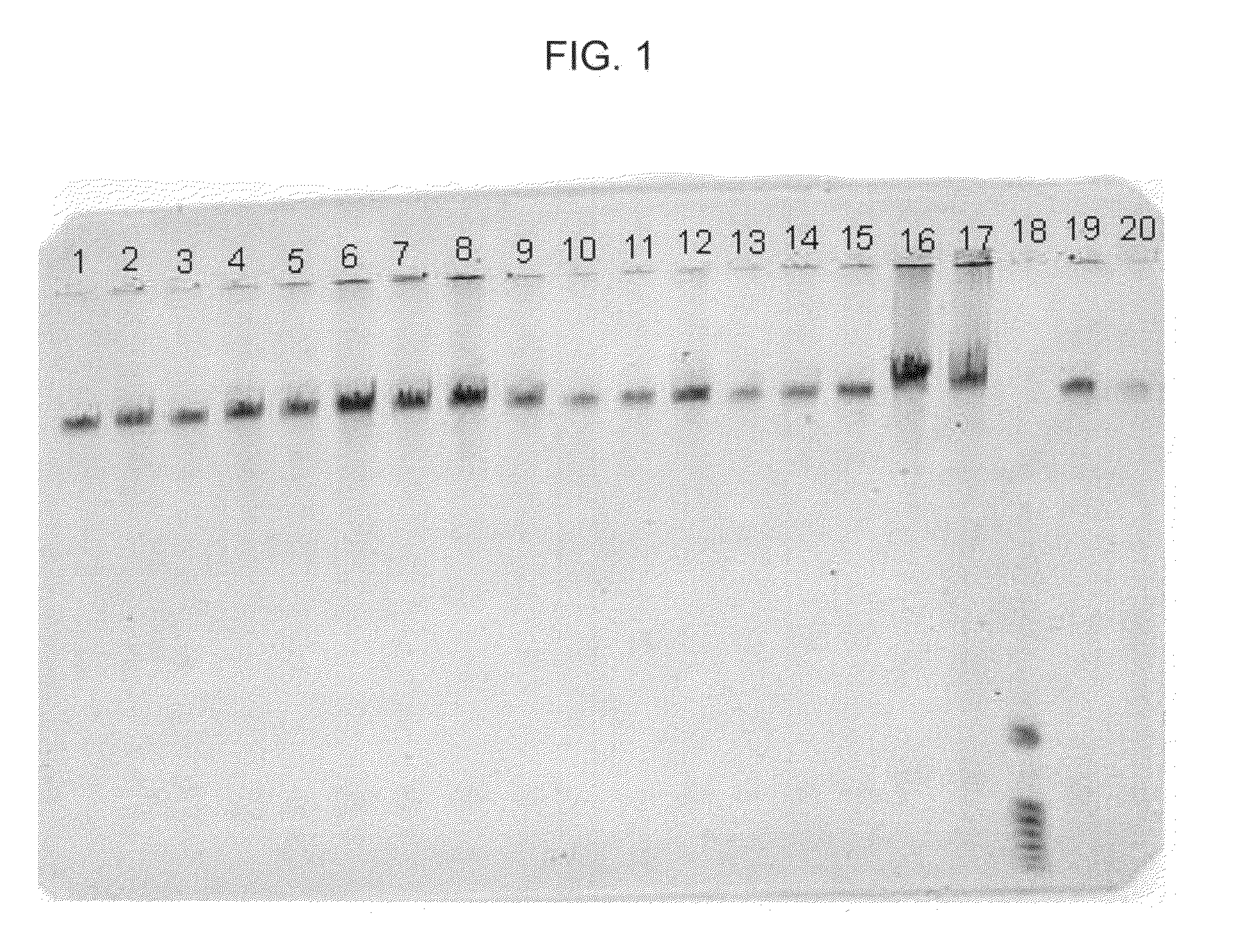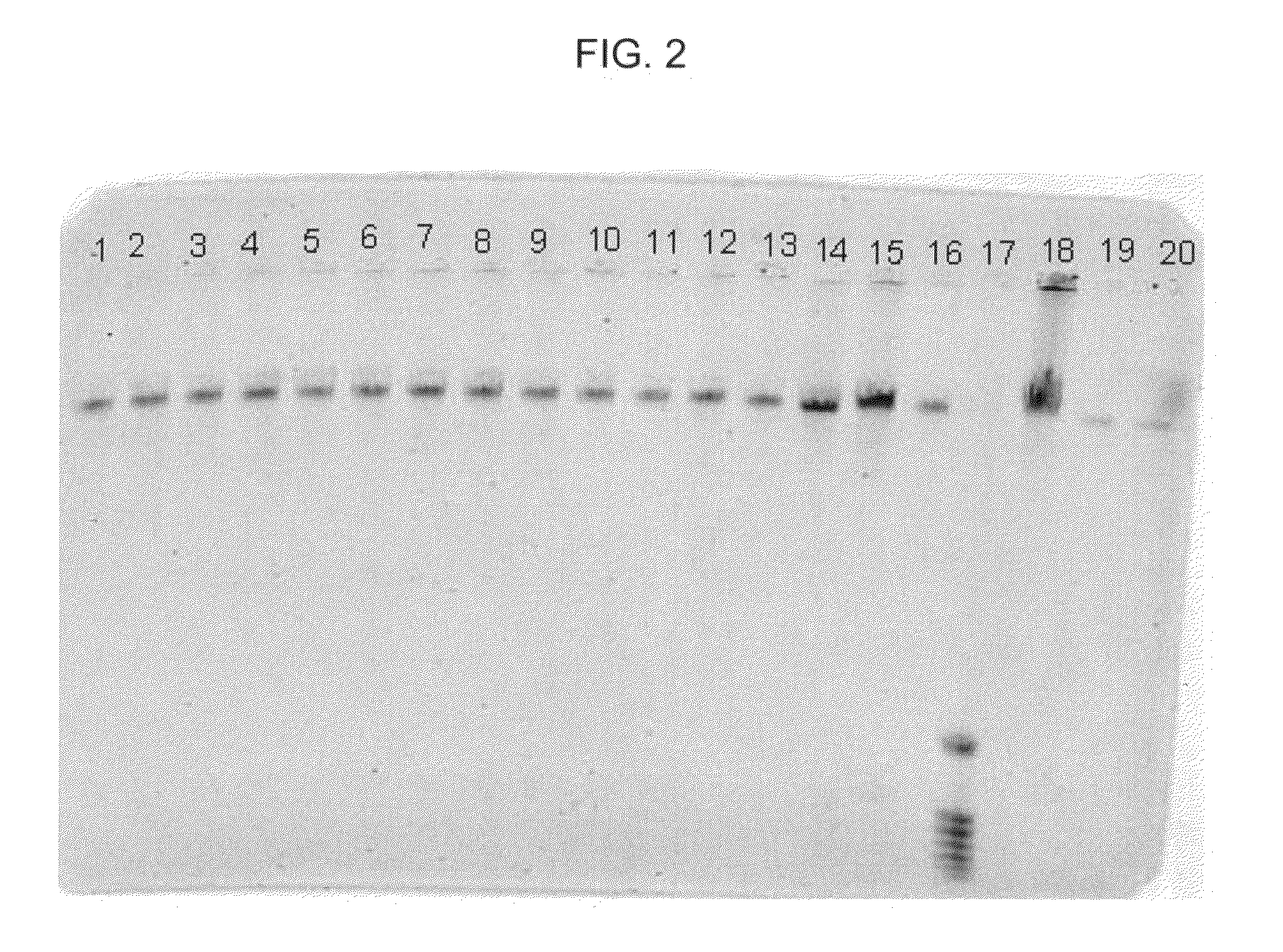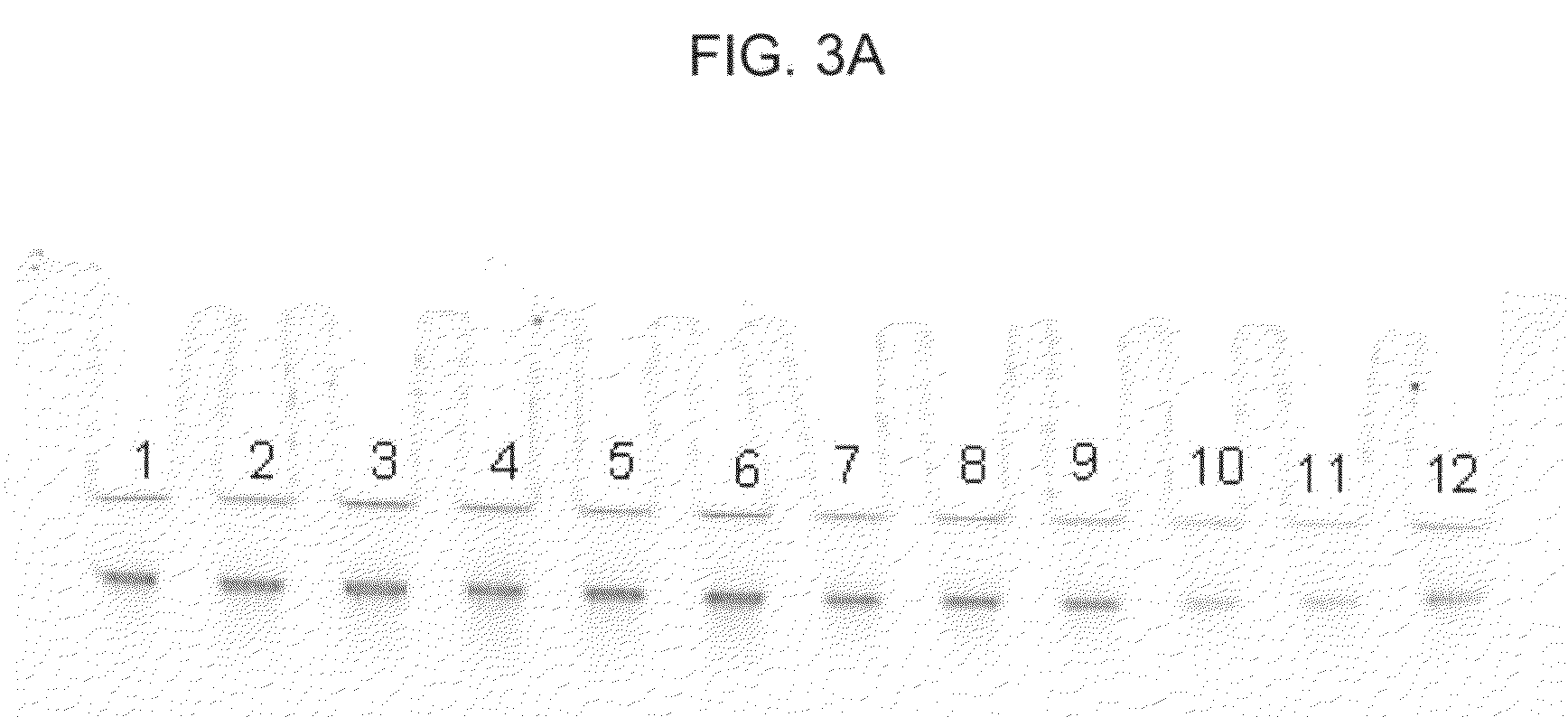Methods of optimal purification of nucleic acids and kit for use in performing such methods
a technology of nucleic acids and purification methods, applied in chemical methods analysis, instruments, organic chemistry, etc., can solve problems such as low yield
- Summary
- Abstract
- Description
- Claims
- Application Information
AI Technical Summary
Benefits of technology
Problems solved by technology
Method used
Image
Examples
example 1
[0044]In this example, DNA from human whole blood samples was purified. The following procedure was used:[0045]1. Prepare 18 samples, 1-18, by adding 20 μl of proteinase K, followed by 200 μl of human whole blood (EDTA anticoagulated, available from Bioreclamation, Inc., Hicksville, N.Y., catalog item HMPLEDTA3), to 18 separate 1.5 ml plastic tubes.[0046]2. Add 200 μl of Promega Lysis Buffer (available from Promega, catalog item MC501), to each of tubes 1-18. Mix each sample thoroughly.[0047]3. Allow each sample to sit for about 20 minutes at about 56° C. then, allow each sample to sit for about 2 minutes at about 21° C.[0048]4. Add 500 μl of Promega Binding Solution (available from Promega, catalog item MC502), to each of tubes 1-18. Mix each sample thoroughly.[0049]5. Allow each sample to sit for about 2 minutes at about 21° C. then, add the following particles to each of samples 1-18 as follows: (a) to each of samples 1-4, add 20 μl of MAGAZORB® paramagnetic particles; (b) to eac...
example 2
[0057]In this example, DNA from human whole blood samples was purified using the MaxYield method together with a formulation and binding matrix, different from the binding matrix of Example 1. The following procedure was used:[0058]1. Prepare 18 samples, 1-18, by adding 20 μl of proteinase K, followed by 200 μl of human whole blood, to each of eighteen 1.5 ml plastic tubes.[0059]2. Add 200 μl of Promega Lysis Buffer to each of tubes 1-18. Mix each sample thoroughly by, for example, vortexing.[0060]3. Allow each sample to sit for about 20 minutes at about 56° C. then, allow each sample to sit for about 2 minutes at about 21° C.[0061]4. Add 500 μl of Promega Binding Solution, to each of tubes 1-18. Mix each sample thoroughly by, for example, vortexing.[0062]5. Allow each sample to sit for about 2 minutes at 21° C., then add the following particles to each of samples 1-18 as follows: (a) to each of samples 1-4, add 20 μl of paramagnetic zeolite particles; (b) to each of samples 5-8, ad...
example 3
[0071]In this example, DNA from 200 μl human whole blood was purified with a DNA-IQ™ method using a GTC-A formulation and binding matrix. The following procedure was used:[0072]1. Prepare “DX-A,” which consists of 4.0M GTC, 5.0M acetamide, 20% (volume / volume) 1-TG, 0.64% (weight / volume) CHAPS, 0.64% (volume / volume) TERGITOL™ type NP-9, and 0.16% (volume / volume) TRITON™ X-100 in a 15ml plastic tube.[0073]2. To the 4 ml of DX-A, add 2 ml of human whole blood and thoroughly mix by, for example, vortexing. Add 2 ml of nuclease free water and mix by, for example, vortexing.[0074]3. Prepare fifteen samples, 1-15 by adding 500 μl of the new combination to each of fifteen 1.5 ml plastic tubes, then add the following particles to each of samples 1-15 as follows: (a) to each of samples 1-3, add 20 μl of MAGAZORB® paramagnetic particles; (b) to each of samples 4-6, add 10 μl of MAGAZORB® paramagnetic particles; (c) to each of samples 7-9, add 5 μl of MAGAZORB® paramagnetic particles; (d) to ea...
PUM
| Property | Measurement | Unit |
|---|---|---|
| ionic strength | aaaaa | aaaaa |
| pH | aaaaa | aaaaa |
| ionic strength | aaaaa | aaaaa |
Abstract
Description
Claims
Application Information
 Login to View More
Login to View More - R&D
- Intellectual Property
- Life Sciences
- Materials
- Tech Scout
- Unparalleled Data Quality
- Higher Quality Content
- 60% Fewer Hallucinations
Browse by: Latest US Patents, China's latest patents, Technical Efficacy Thesaurus, Application Domain, Technology Topic, Popular Technical Reports.
© 2025 PatSnap. All rights reserved.Legal|Privacy policy|Modern Slavery Act Transparency Statement|Sitemap|About US| Contact US: help@patsnap.com



